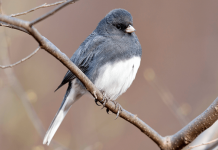
As a beekeeper and self-proclaimed bee nerd, I am often asked about the decline of the honey bees (Apis mellifera) and what we should be doing about it. And while there is a lot to say on that topic, a more dire and much less talked about issue is the decline of native bee populations. Despite there being approximately 20,000 known bee species in the world, with 1,600 native bee species in California alone, the introduced European honey bee continues to dominate research, media attention, and culture to the detriment of its close native cousins.
This comes as no surprise; honey bees have had a close relationship with humans for thousands of years through their production of honey; their ability to be managed due to their unique, large, organized social structures; and their subsequent instrumentality in the last millennia as pollinators of our staple agricultural crops. And while “Save the Honey Bees” has become a popular slogan throughout the world, the alarming decline of native bee populations also needs attention.
The majority of native bees are ground-dwelling and solitary, meaning that they exist without social structures and in many cases one female bee creates her own nest and lays once yearly. Due to their specialized habitat and low birth rate, they are extremely susceptible to habitat loss and fragmentation from human impacts such as monocrops, highways, and housing developments. In addition, certain native bees have been shown to be more sensitive to neonicotinoids and other pesticides than honey bees. Many of the studies surrounding the effects of pesticides on bees, however, continue to focus only on the introduced honey bee, leaving native bees at greater risk.
Studies now show that rogue honey bee hives could be contributing to the spread of invasive plant species through preferential pollination, thereby decreasing wild plant populations. This negatively impacts native bees that rely on regional flora and fauna. Additionally, honey bees in certain areas can create competition for resources and spread diseases among native bees. Honey bees are an introduced, non-native species that must be managed responsibly in order to lessen their impacts on native plant and bee species.
Protecting and restoring native bee populations begins with learning more about them. The incredible variety of native bees that pollinate our wild and cultivated plants deserve their due recognition.
Here is a quick overview of three common native bee species in our Northern California region:

Bombus vosnesenskii – Yellow-faced Bumble bee
The fuzzy and semi-social bumble bee belongs to the same family as the honey bee, Apidae. In California, we have several different species of Bombus, in which Bombus vosnesenskii, the yellow-faced bumble bee, is probably the most common.
Bumble bees are similar to honey bees in that they do produce small amounts of honey (but only for emergency food rations), and that they exist within small hierarchical social structures with a queen bee.
Bumble bees are important pollinators for crops that rely on buzz pollination, such as tomatoes. Once abundant, their populations have been plummeting in recent years.
The Franklin’s bumble bee (Bombus franklini) that the late Robin Thorpp kept a dedicated eye on, has still not been spotted in surveys since 2006, but was previously found in our coast ranges.
Agapostemon texanus – Ultra-green Sweat Bee
Green sweat bees, or Agapostemon, are the most strikingly colored members of the Halictinae family. The female bees are found in solid colors of metallic greens and blues while the male bees are colored with additionally striped abdomens. Their common name, sweat bees, comes from their preference during hot days for lapping up human sweat due to the salt it contains.
The majority of Agapostemon are solitary ground-nesting bees. Two to 24 females will sometimes share a single ground nest, but each individual will build and provision its own nest cells.

Osmia californica – California Mason Bee
The California mason bee, Osmia californica, belong to the family Megachilidae. Efficient and avid pollinators, a single female bee can visit around 20,000 blossoms a day, whereas a honey bee only visits 50-1,000. Despite a common misconception that honey bees are the most efficient pollinators, many native bees like Osmia californica pollinate at much higher rates.
Apt to their name, these bees nest in tunnels they create within old wooden structures and old masonry, as well as in trees, logs, rotting wood, and also hollow stems of herbaceous plants and grasses.



